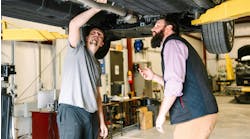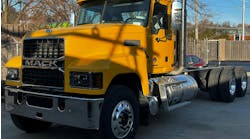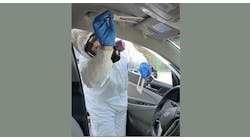Throughout the past few months, I have become increasingly frustrated with the quality of replacement parts. Faulty parts right out of the box, parts that don't fit or last only a quarter of the time the original part did. The problems interestingly aren't limited to aftermarket parts. OEM parts have had issues, too.
Maybe it's just a coincidence — like technicians realizing all the vehicles in the shop one day are silver or all are SUVs. Perhaps this run of faulty parts is a fluke, but it is an irritating, costly and lengthy one at that.
There was a time not too long ago when you could open a box and find the part you ordered. If I wanted a premium part, that's what would be in the box. If I ordered the same part the next day, it would be identical to the first one. The story was the same with "value priced parts" and OEM parts. In the last couple of years when I've opened a box, I really haven't been sure what I'm getting. It is not uncommon to order two identical parts that show up in the same box, but obviously are made by two different manufacturers.
When a supplier changes a line, is it fair to the end user to put one brand into another manufacturer's box? While each part might fit the application, I wonder which is the most reliable, best-fitting product and best part for my client. It raises questions about if the part is going to last as long as the original or, preferably, longer. Or is that part in the box because the supplier got a great price from an overseas manufacturer? I'm not insinuating that a part is substandard simply because it's produced in another country. But we have a world economy because of cheaper overseas labor.
There is only one thing more frustrating than having a part not perform properly once it's installed: having the part fail after the customer picks up the car. We recently installed a pair of front struts, and the client came back almost immediately complaining of a "weird feeling" while driving. The left strut was stiffer than the right, and we corrected the problem by replacing the struts and realigning the wheels. But nothing can reimburse the client for the inconvenience or the shop for the lost revenue and time.
There is a lot of inconsistency in the parts business. Brake parts are a good example. My shop has paid a lot of money for premium-grade brake pads only to have them come back with a problem typically associated with cheap pads. After trying different ways to solve the problem, I've replaced the premium pad with a "value pad" and the issue went away.
Servicing vehicles is challenging enough without having to deal with parts quality issues. I don't mind paying a premium price for a premium part if it truly is premium. But if it's sold as such, the service life should be at least as long as the OEM part it is replacing. And if it isn't, then what are the options — pay less for the value priced product and take a chance with the warranty?
I've tried to relay my experiences to my jobber/supplier, but it seems to fall on deaf ears. Perhaps a rating system similar to the ones you see on the Internet when purchasing a product can be developed. The product review section could be incorporated into a supplier's online parts catalog. Technicians, service writers and shop owners could rate an item based on their experiences. This might help get product information from the service bay to the parts distributors and manufacturers.
Chuck Hartogh is vice president and co-founder of C&M Auto Service Inc. of Glenview, Ill., and Vernon Hills, Ill., and is an ASE-Certified Master, L1 Technician. (ASA).



